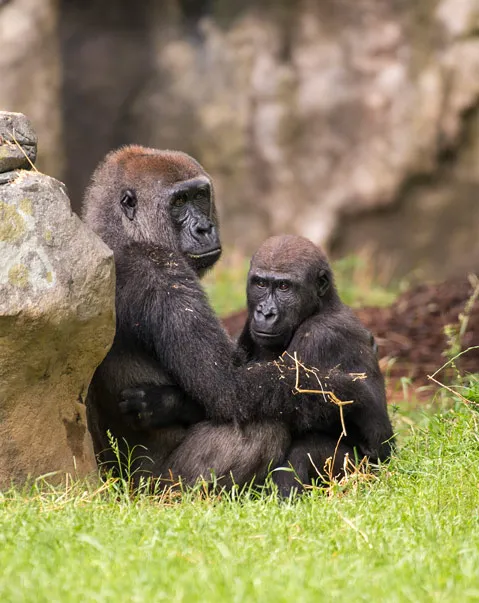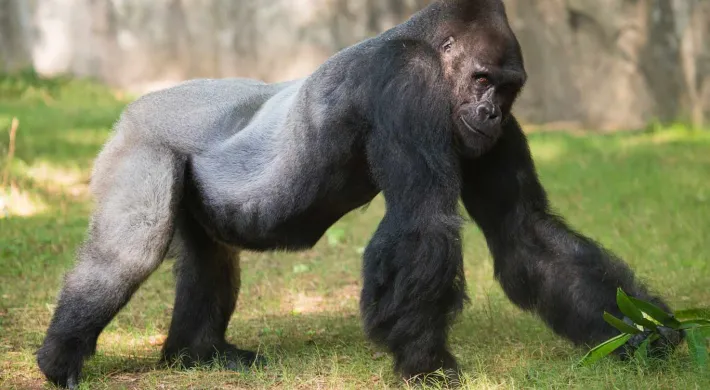Did you know female gorillas only reproduce once every 4 to 5 years? Learn more about western lowland gorillas.
The gorillas at the Zoo get a heart-healthy diet. It consists of mostly leafy greens with a little fruit and some starchy vegetables spread throughout the habitat. This diet mimics what they eat in the wild and encourages them to spend more time foraging and eating their food.
North Carolina Zoo is helping to save gorillas in the wild. We equip rangers with the tools they need to track and reduce threats to gorillas as well as count the gorillas themselves. In addition, we are assessing the potential risk of disease transmission between gorillas, livestock, and people. You can read more about the Zoo’s work on wild gorillas below, under related resources.
- Gorillas tend to live in family groups of a dominate male with several females and some of their offspring.
- They are often most active in the morning.
- Nests of plants and leaves are built on the ground or in a tree to sleep in.
- Critically Endangered (CR)



